Intel: For Mainstream Gamers, Our IGPs Are Equivalent to Discrete GPUs
by Anton Shilov on January 14, 2016 12:03 PM EST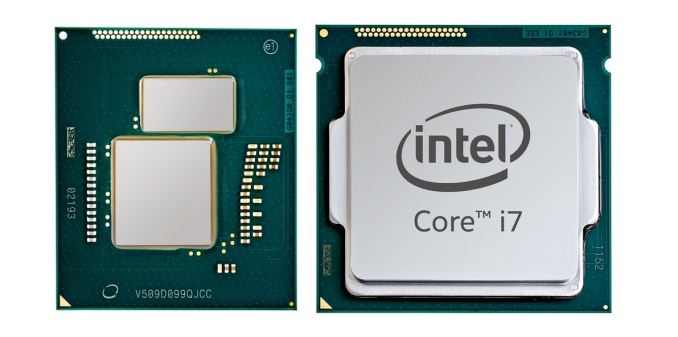
Intel’s integrated graphics processors (iGPUs) are the most widespread PC-class graphics adapters on the planet. Enthusiasts of high-performance personal computers do not use Intel’s iGPUs, but the world’s largest developer of microprocessors says that for mainstream and casual gamers its graphics solutions offer performance, which is comparable to that of inexpensive discrete video cards.
“For the mainstream and casual gamer, we have improved our Iris and Iris Pro graphics tremendously,” said Gregory Bryant, vice president and general manager of the desktop client platforms at Intel, at the J.P. Morgan Tech Forum at the 2016 International CES. “We have improved our graphics performance [by 30 times] from where it was five years ago. We believe that the performance of Intel’s integrated graphics today, what we offer in the products […], is equivalent to the performance of about 80% of discrete [GPU] installed base.”
Intel has been improving its integrated graphics cores at a rapid pace after the company cancelled its discrete graphics processing unit code-named Larrabee in 2010. Thanks to timely transition to newer process technologies, Intel could increase transistor budgets of its central processing units significantly every couple of years. As the company did not increase the number of general-purpose cores inside its mainstream CPUs for desktop and mobile personal computers in the recent years, the lion’s share of that additional transistor budget was spent on iGPU-related improvements.
Intel considers its code-named Clarkdale and Arrandale processors its first-generation CPUs with integrated graphics (which is not entirely correct since these CPUs had two dies: the processor die as well as graphics and integrated memory controller die). Back then, Intel’s most advanced iGPU featured 12 execution units (EU) with peak compute performance of around 43 GFLOPS. Since then, the architecture of Intel’s integrated graphics processors has evolved to accommodate new features and gain performance. Today, each EU features two ALUs that can execute up to four 32-bit floating point or integer operations per cycle (in fact, one of the two ALUs in Intel’s Gen8 EU also supports double precision 64-bit floating point operations). Intel’s latest microprocessors — Broadwell with GT3e and Skylake with GT4e graphics cores — have Iris Pro iGPUs with 48 and 72 EUs as well as peak compute performance of 883 and 1152 GFLOPS, respectively.
While Intel did not define what it considered to be the installed base of discrete graphics cards, it is obvious that the company compares its recent Iris and Iris Pro integrated graphics processors to discrete graphics adapters sold in the last five or even more years and which are currently in use.
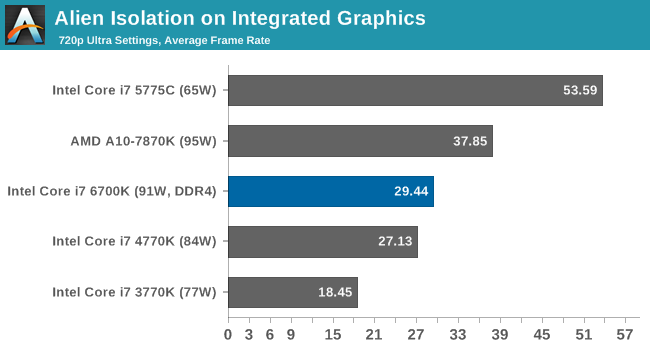
Intel’s latest integrated graphics processor found in its Skylake chips — the Iris Pro 580 with 72 execution units and 1152 GFLOPS compute performance — should outperform even more advanced discrete graphics processors. In fact, AMD's latest integrated graphics core also outperforms the low-end graphics card (albeit, by a small margin).
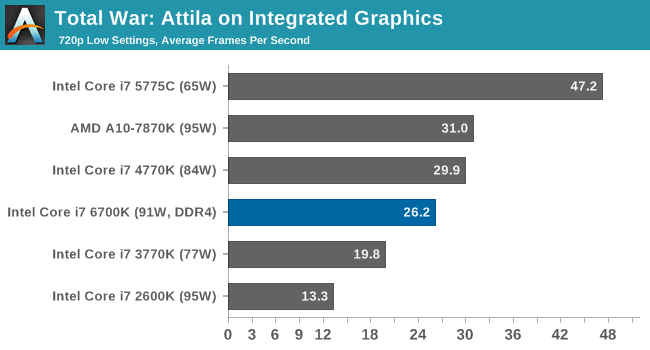

Because many people do not play demanding games that use the latest application programming interfaces (APIs), performance and features of Intel’s modern iGPUs may be enough for their needs. Moreover, since casual and even some mainstream gamers usually buy low-end graphics adapters, Intel’s Iris Pro 6200 and Iris Pro 580 can actually outperform such GPUs (or offer similar performance). It is not clear whether 80% of discrete graphics boards currently in use belong to the entry-level segment, but it evident that contemporary iGPUs are somewhat better than cheap video cards.
Even though enthusiast gamers do not use Intel’s high-end iGPUs, the company continues to thrive because of PC gaming. According to Intel’s management, sales of its Core i7-series microprocessors set records in Q2 2015 despite weak demand for personal computers overall. Moreover, Intel claims that shipments of high-end enthusiast-class hardware in general are at all-time high and growing. Intel sells not only powerful Core i7 CPUs with unlocked multiplier to demanding gamers, but also chipsets, solid-state drives, various controllers and other components for high-end PCs. As a result, the company takes advantage of increasing demand for powerful personal computers.
Source: Intel Investor Relations


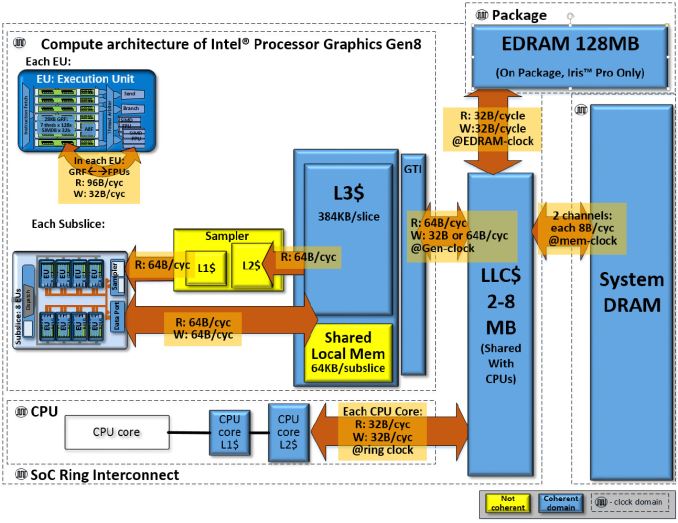
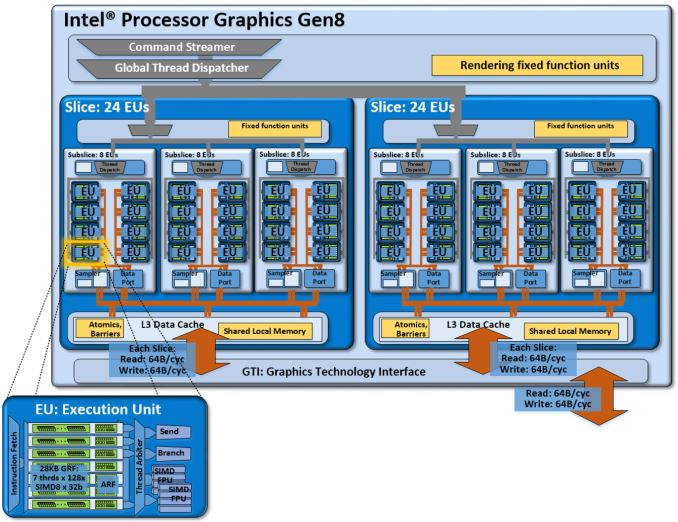








96 Comments
View All Comments
pt2501 - Friday, January 15, 2016 - link
Ah my current setup mimics yours, just with a single step down in each part. I game with a 2500k@4.4 ghz with a 390 on a 1080p120hz. Glad to know that the concept of a powerful GPU with a sufficiently powerful CPU has such a long life span with the slow down of CPU IPC improvements.I plan on seeing if directx 12 will make my 2500k last even longer. Would be great have a CPU be relevant 6-7 years after it was released.
marcelobm - Thursday, January 14, 2016 - link
I don't know what "mainstream" means to you.. but most players don't care about resolution/fps just look at the sales of PS4/Xbox One and the players who still plays on the last generation consoles..BurntMyBacon - Monday, January 18, 2016 - link
@marcelobm: "I don't know what "mainstream" means to you.. but most players don't care about resolution/fps just look at the sales of PS4/Xbox One and the players who still plays on the last generation consoles."I don't disagree, but given that Intel isn't powering those consoles and there is not path of upgrade that will put Intel graphics in your console, I'm pretty sure they were talking mainstream PC gamers.
Point about resolution/fps still stands though. Most just think it looks good or it looks like crap with the occasional, "that game gives me motion sickness". I've met a few people who could play a particular game until a PC version came out with sufficiently powerful hardware to hide the jitters in the game engine. Hasn't been as much of a problem more recently, though.
kaesden - Thursday, January 14, 2016 - link
I think intel's definition is mainstream of the computer industry, not mainstream of the gamer demographic. For someone not really into gaming just looking to fire up some basic appstore games or minecraft or something similar, iris pro graphics would probably be satisfactory to someone who doesn't know any better. 30fps is smooth enough to be playable and 720p is definately a bare minimum standard, but it is more than capable of doing that.Of course anyone remotely into gaming wouldn't accept such low performance levels and would either go for a console, or a real gaming pc with a discrete GPU.
ddriver - Thursday, January 14, 2016 - link
The title says "mainstream gamer" not "mainstream hardware". There is a difference.A casual game player - that's what intel talks about, but that person is not a gamer, the gamer is a gaming enthusiast, who makes purchases with gaming in mind, gaming gear and whatnot.
Much like not every car driver is a racer. And claiming your family van is good enough for mainstream racers.
jragonsoul - Thursday, January 14, 2016 - link
No.. a mainstream gamer is someone that plays games and enjoys the "mainstream" games. CS:GO, COD, AC, DA and other games targeted at a large pool of people. They don't need cutting edge hardware. Enthusiast gaming is different and you're not understanding. Your racing analogy is also totally wrong. It's more like Intel saying the "average commuter" is ok with this more efficient car and then you talking about "Well it's not good enough for racing!"mkozakewich - Sunday, January 17, 2016 - link
It's a fallacy to say that people are stupid if they're playing at 30 fps. I've been playing a lot of really good indie titles on a three-year-old i5, and it's performed really well. I've honestly been more limited by RAM and drive space. I've even managed to play League of Legends without problem.Some games, like first-person shooters, require a higher frame rate to achieve a good level of accuracy. Keep in mind most movies are about 24 fps.
There are different markets. A lot of people will enjoy the Intel graphics.
CaedenV - Thursday, January 14, 2016 - link
think of it more this way:My wife plays games... she plays card games, and other such simple games. When win8 came out her Core2Duo could no longer play these kinds of 'mainstream' games with a decent frame rate, so I dug around and found a GT8600 GPU that wasn't in use which brought frame rates back up. When she moved up to an Ivy Bridge i3 the iGPU was as good or better than having the dedicated GPU, so we were able to leave it out of the build.
Fast forward 4 years and now my kids are starting to play games on her PC that are a little more demanding. So the question in my mind is if I should upgrade her whole PC (really interested in something like a NUC or Brix), or just pick up another dGPU.
Essentially, Intel is saying to people like myself: don't bother with a dGPU, just upgrade the whole computer because it will make the whole thing run faster, quiter, sip less energy, and take less space, while adding modern connectivity, while having a GPU level roughly as good as the dGPU you are considering in the first place.
The problem is that at the end of the day I am going to end up spending ~$75 per year on her computer. Do I spend just that $75 on a dGPU now? Or do I spend $4-600 and have a new system that is going to last a few years. I really have half a mind to spend more now and not touch it for a while, so this kind of messaging is working on at least one person.
CaedenV - Thursday, January 14, 2016 - link
Of course, the other option is that I just buy myself a GTX970 and put my current GTX570 in her computer... bu then I am spending even more money lol.ddriver - Thursday, January 14, 2016 - link
Your wife is not a mainstream gamer, she is not even a casual gamer, she is a non-gamer who plays casual games. Not every act of playing a game makes a gamer.Anyway, who the hell buys 70$ GPUs? It makes no sense whatsoever. I suspect most of the people who end up purchasing such products don't really do it deliberately, it is just people who know nothing about tech, ending up being shoved a completely pointless GPU through buying some retailer's assembled configuration.
I reckon it is entirely pointless purchasing GPUs under 150$, 99% of all consumer grade CPUs come with iGPU that will be about as good. Now if you buy a PC with the intent to play games and you happen to be a poor guy, you will buy something in the 150-250$ range, and that's what a mainstream gamer is. Someone focused on gaming, making a purchase with gaming in mind.
The title doesn't say "mainstream GPUs" - it says "mainstream gamers" but really talks about casual gamers at best, and that's being generous, more appropriately it will be regular people who casually play games, not gamers.
If we are to generalize, then we could say a gamer is someone who plays actual board games, in that case, intel's GPUs are MORE THAN ENOUGH, because those people don't even need computers to play their games.